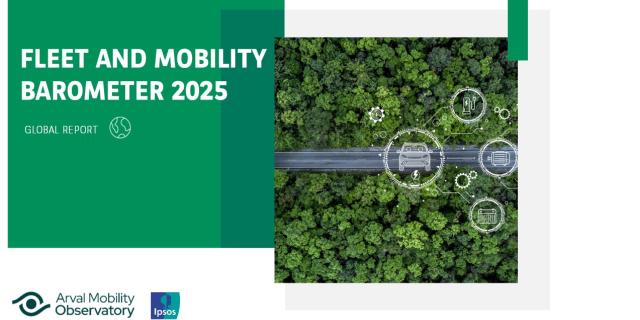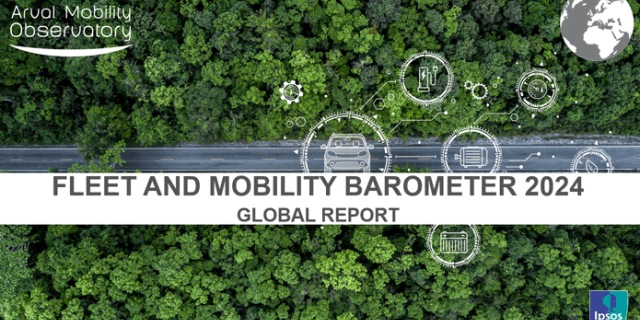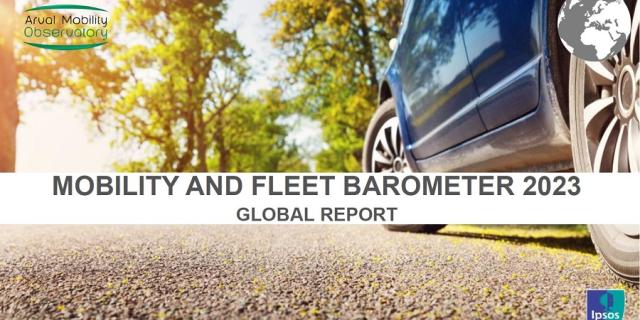Gen Z-ers are not just tech-savvy, they’re digital natives. They grew up with the internet always within a hand’s reach, streamlined online and in-app shopping for goods and services (including mobility services), and instantly accessible information.
This all means they have high expectations for digital services and wouldn’t hesitate to do deep research via multiple channels (search engines, social media, personal contacts, and many more) whenever they need to make a purchasing decision, including those related to their commuting and business travel choices. In fact, 27% of them use apps to facilitate their commute.
In parallel to that, the ever more urgent climate emergency has made environmental consciousness one of the hallmarks of Gen Z – along with their unwillingness to simply opt for the default choices of previous generations when it comes to business travel and commuting.
This, in turn, translates into a strong preference for shared, flexible, and more sustainable means of transportation. What does this mean in practice? In this article, we’ll see through the details on how Gen Z is reshaping corporate fleet management and mobility, and what fleet managers and mobility service providers can do to cater to their needs and expectations.
Gen Z’s influence on fleet management
As Gen Z-ers enter the workforce, their influence on fleet management and corporate mobility solutions also grows. Conversely, the majority (approx. 60%) of both Gen Z and millennials believe they have the power to make a difference and drive change within their organisations – and aren’t afraid to change jobs if they’re unsatisfied.
Therefore, companies that expect to hire and retain Gen Z workers need to be mindful of how they manage their corporate fleets and mobility offerings – and whether these align with young employees’ expectations and needs.
Despite the fact that cars are still a very popular means of transportation, there’s a clear modal shift away from private vehicles and towards alternative mobility solutions. According to McKinsey & Company, 42% of those under 30 use private cars, compared to 49% of those aged 30 to 45 and 77% of those over 45. They would also prefer to increase their use of public transit, micromobility, and shared mobility offers in the future:
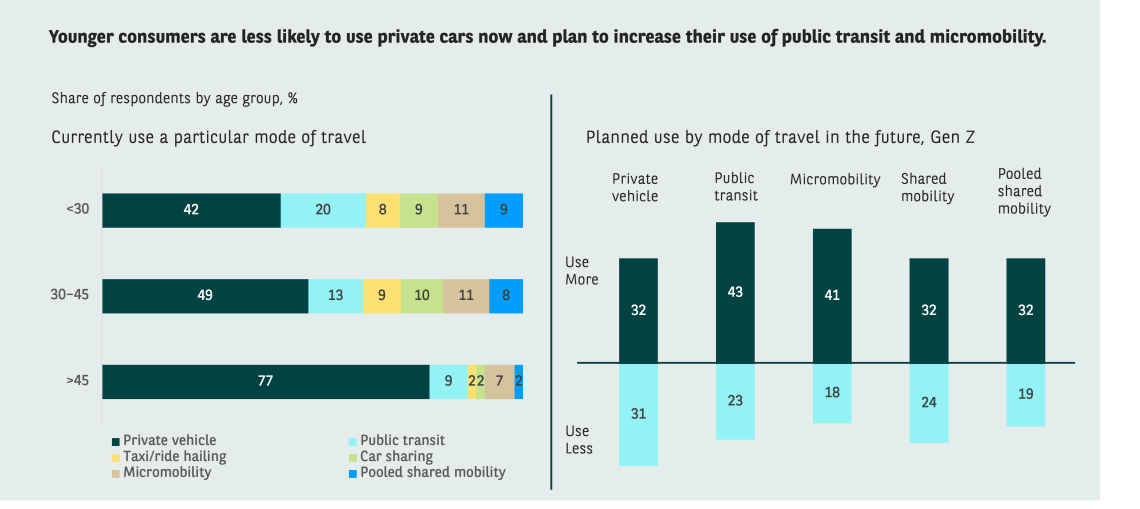
Interest in private car ownership is declining across the generations, while other modes of transportation are gaining importance (Source: McKinsey & Company; rework of graph by Arval Mobility Observatory)
Additionally, 50% of Gen Z-ers in Europe envision going electric with the next car they purchase – and 63% of them believe EVs will completely replace cars with internal combustion engines in the future.
This should be a clear signal to HR professionals and fleet operators: Gen Z-ers don’t want to commute or go on business trips alone in their diesel cars; they’d rather drive electric vehicles, carpool, or use alternative means of transportation.
In parallel to that, Gen Z has grown up with data at their fingertips at all times and is at ease with researching different options before committing to one. This means they expect data-driven fleet management solutions that are efficient, convenient, and sustainable and that actually move the needle for them, rather than rely on outdated models.
In fact, Gen Z is particularly at ease with using different applications for their commuting needs, either to plan journeys (Google Maps, CityMapper), plan journeys and purchase tickets (DB Bahn, SNCF, Renfe), or to access a mobility-as-a-service (MaaS) offer such as Uber. For 43% of those aged 18 to 24, mobile applications are an appealing solution when commuting:
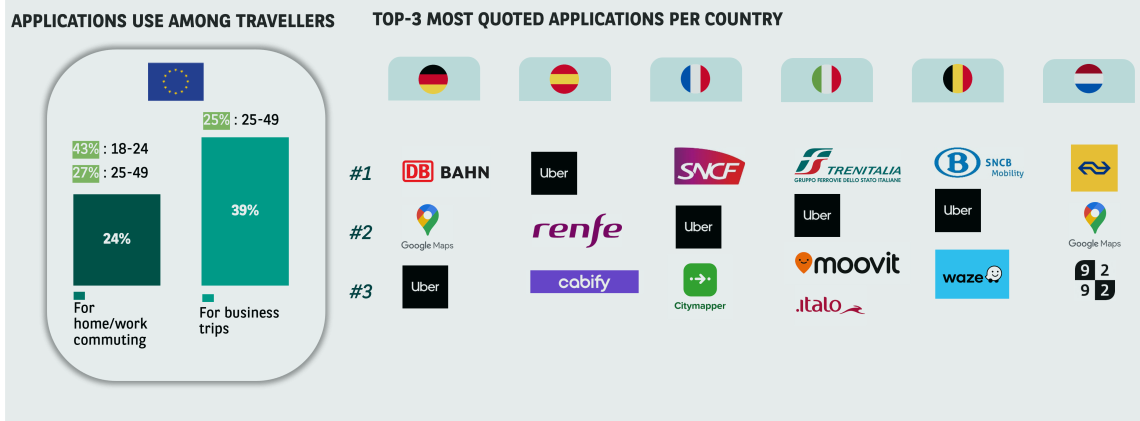
Gen Z is at ease using apps for their commuting and business travel needs (Source: Arval Mobility Observatory)
On-demand, app-based services are present in the life of Gen Z-ers in many different forms, so it’s only natural that they’re at ease with mobility solutions that leverage this model.
Gen Z’s impact on corporate mobility services and policies
The link between improving employee satisfaction and providing the right mobility solutions is clear; mobility offerings are important for 62% of employees in the EU – and even more so for those who plan to leave their jobs in the next six months (72%):
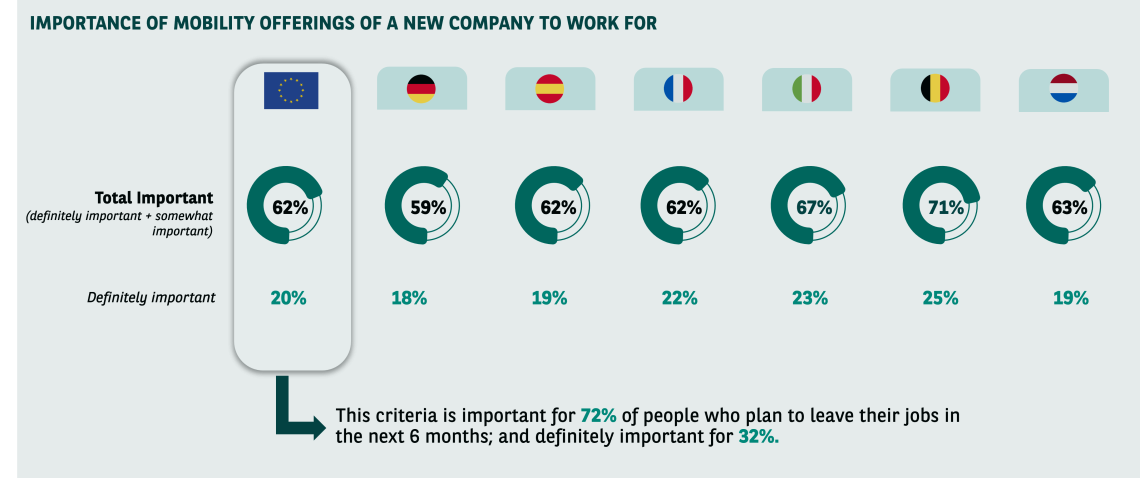
Mobility solutions remain an important lever of attracting and retaining top talent (Source: Arval Mobility Observatory)
And, given that Gen Z-ers feel more at ease changing jobs than other generations, it’s essential for HR managers to offer mobility solutions that align with their expectations and values to retain them.
As mentioned above, young employees have a preference for using more sustainable transportation options, including public transportation and car sharing, rather than stick to the status quo of vehicle ownership, as the data from the Arval Mobility Observatory shows:
- 70% of those aged 18 to 24 would like to be offered car sharing options at work.
- 66% of them would like to have access to bike leasing options.
- 53% would like to get scooter and motorcycle leasing options.
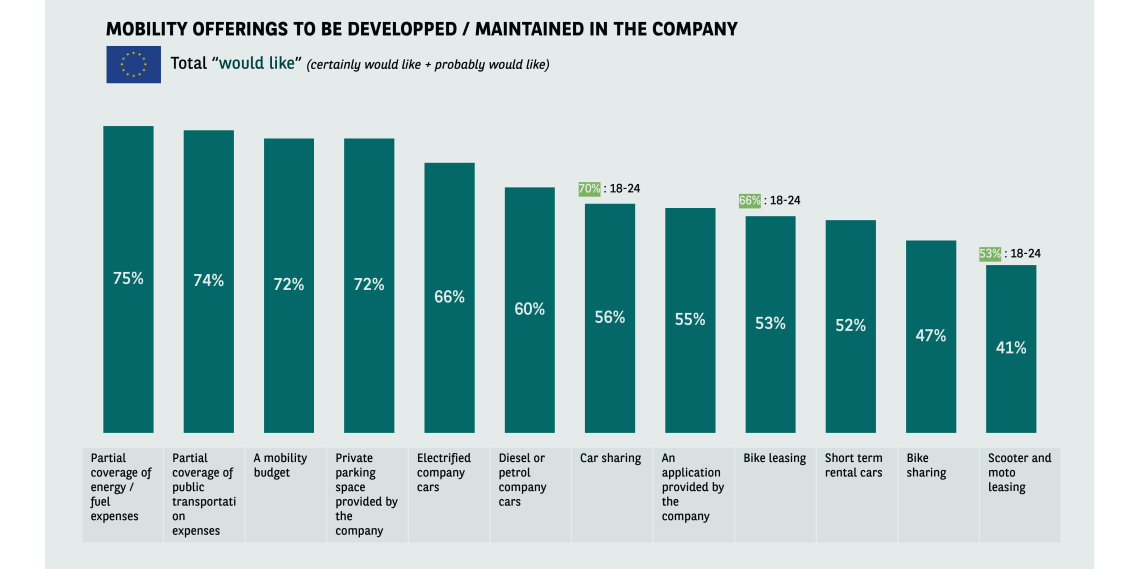
Gen Z would love to see more flexible mobility options developed or maintained by their companies (Source: Arval Mobility Observatory)
Additionally, for 40% those aged 18 to 24, public transport is the most common means of transportation, compared to 24% of all respondents to the 2024 study on employee mobility performed by Arval Mobility Observatory:
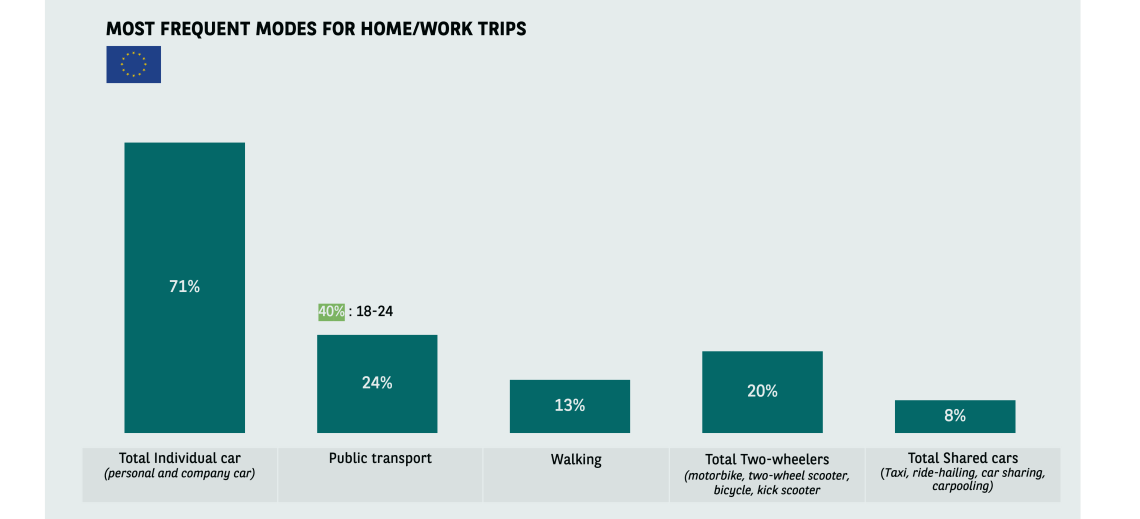
Although individual cars are still the most frequent means of commuting, 40% of respondents aged 18 to 24 prefer public transport (Source: Arval Mobility Observatory)
One of the ways fleet managers can respond to those preferences is to offer flexible and sustainable mobility policies – which can not only help your organisation reach its ESG goals by reducing carbon footprints (which, arguably, is an important consideration for Gen Z employees) – but also helps you increase employee wellbeing.
How to cater to Gen Z’s mobility needs in the future
So, how can organisations better meet the demands of Gen Z for more flexible commuting and business travel options?
After all, even though those aged 18 to 24 who have the possibility to work remotely do so for 3.3 days per week on average, they still need to commute to the office on the remaining days – and potentially go on business trips.
The use and development of user-friendly interfaces and apps is one of the main avenues that large organisations should be exploring when developing their mobility policies and deploying corporate fleets. Personalisation can also help companies provide this generation with a better mobility experience: 45% of Gen Z-ers in Europe expect a personalised digital experience.
Furthermore, younger employees have a strong preference for flexibility and convenience, which can be satisfied with on-demand vehicle access, where users pay for access to vehicles as needed rather than owning them. “The user” in this case could be the company, but it could also be the individual employee, who is then reimbursed for their travel-related expenses. This is also currently the most attractive mobility option across all age groups, at 81%.
The integration of AI and machine learning in fleet operations would also help fleet stakeholders meet Gen Z’s demand for efficiency. For example, AI and ML models could be used for proactive vehicle maintenance, route optimisation, faster and more efficient charging of EV vehicles, or dynamic scheduling and demand forecasting.
This demand for better service availability isn’t specific to Gen Z – the sensible use of technology appeals to all generations. However, it could be particularly attractive to younger employees who have high expectations for seamless, intuitive vehicle management systems and processes.
Gen Z will also likely have a growingly key role in pushing forward the adoption of electric and autonomous vehicles in the future, along with smart city initiatives, to make commuting and business travel more efficient and sustainable.
For HR professionals, it is crucial to seize those trends and use them as opportunities to create mobility policies and offers that align with the preferences of Gen Z employees, if they wish to attract, hire, and retain young talents in the long term. For that, they need to work in close cooperation with fleet operators, mobility service providers, and, most importantly, Gen Z employees themselves.





